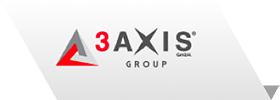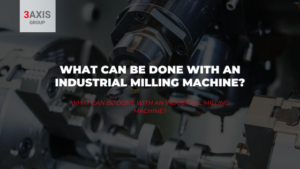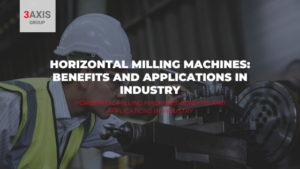CNC milling is one of the most common processes when looking to produce complex parts. However, sometimes people ask for CNC machining when looking for milling. Machining entails both milling and turning but these two have distinct differences. CNC milling uses a rotating cutter to remove material from a workpiece, while CNC turning uses a rotating part for cutting.
It is important to be clear about this to know and understand the components of a CNC milling machine.
Milling is suitable for many different features, including threading, chamfering, slotting, etc. This makes it possible to produce complex designs using a variety of different milling operations: Surface milling, face milling, angular milling, form milling, profile milling, gear milling, etc.
Discover the parts of a CNC milling machine.
What are the main components of a CNC Milling Machine?
Before we delve into the basic parts of a CNC milling machine. Let’s explain the manufacturing process by giving an overview of the workflow:
- Designing the parts in CAD
In this first step, the virtual prototype of the final product is created in the CAD software. The code is available for checking and amending, if necessary, to suit the machine’s capabilities. Also, manufacturing engineers can simulate the whole cutting process using this kind of software.
- Translating the CAD files into code for machining
- Setting up the machinery
Although most of the process is automatic, at this stage there are many aspects of the process that require a skilled operator.
- Producing the parts
There are various types of milling machines with a variety of functions based on certain components. Below we mention the parts commonly found on a CNC milling machine:
Axes
It can be three, four, five even six axes depending on the type of the machine. Actually, it determines the size and also what function it is meant to do. But let’s make it fully clear what each means:
- 3-Axis vertical mill means that the table can move in 2 directions – X and Y. This enables positioning the workpiece relative to the cutting tool while the distance remains the same. So the third, Z-axis, is added by allowing to lower the cutting tool.
- 4-Axis mill has all the 3 axes as previously described. But another one comes in – the A-axis.
- 5-Axis. Here we add the B-axis which gives rotational movement around the Y-axis.
- 6-Axis mill has a stationary worktable and all the freedom of movement is allocated for the cutting head. It can move in 3 directions as well as rotate around all these axes. 6-axis CNC milling centres are not too common because of the substantial price-tag.
Column
The column is that component which travels along an axis which is used to hold the part which cuts or mills.
Control Panel
The control panel is the part which helps hold the computer. This is where G-codes can be programmed into the machine.
Cutting Tool
The cutting tool is connected to the column and used to cut the pieces in the same way as the operator commands. In short, we could say that it is the brain of the machine.
Spindle
We can say that it is the engine of the machine. Depending on the work you want to do, the power and turns of the spindle are very important.
The spindle is devised of a motor, a taper for holding tools, and a shaft that holds together all the separate components. Spindles rotate on an axis, which receives input on movement from the accompanying CNC controller.
Coolant Supply
Coolant is an instrumental part of milling. It helps extend tool life and provide an improved surface finish of the parts being machined. Understanding the role and types of coolant help you select a coolant that is the right fit for your machine and operation.
Table
The table is the flat platform where the workpiece is attached using a clam. This is the place where the workpiece will be kept when being milled.
Discover also:




